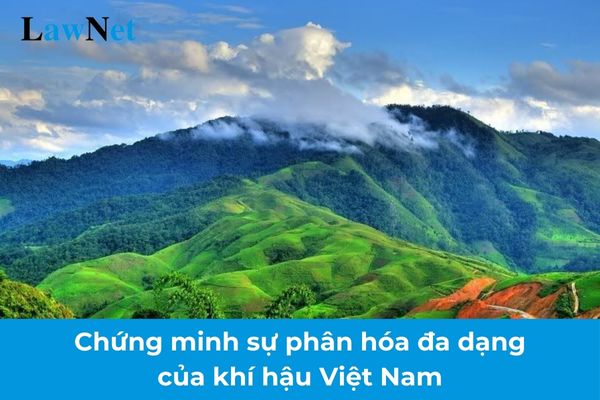What are the guidelines for demonstrating the diverse differentiation of Vietnam's climate for 8th-grade students? What content will 8th-grade students learn regarding the climate and hydrological characteristics of Vietnam?
What are the guidelines for demonstrating the diverse differentiation of Vietnam's climate for 8th-grade students?
Vietnam is a country located in the tropical monsoon region, with a geographical position that extends from the North to the South, across many latitudes and complex terrains. This has resulted in diverse differentiation in the climate across the country. Demonstrating the diverse differentiation of Vietnam's climate helps in a better understanding of the country's natural environment.
Students can refer to the following guidelines for demonstrating the diverse differentiation of Vietnam's climate for 8th-grade students:
|
Guidelines for demonstrating the diverse differentiation of Vietnam's climate Vietnam lies within the tropical monsoon climate zone, but due to the influence of geographical position, terrain, and monsoons, our country's climate has very diverse differentiation according to several factors such as North-South, East-West, elevation, and seasons. |
Note: Content is for reference purposes only.

What are the guidelines for demonstrating the diverse differentiation of Vietnam's climate for 8th-grade students? What content will 8th-grade students learn regarding the climate and hydrological characteristics of Vietnam? (Image from the Internet)
What content will 8th-grade students learn regarding the climate and hydrological characteristics of Vietnam?
Under Section 5 of the General Education Program in History and Geography at the lower secondary level issued with Circular 32/2018/TT-BGDDT, 8th-grade students will learn the following content regarding the climate and hydrological characteristics of Vietnam:
- Tropical monsoon humid climate, diverse differentiation
- Impact of climate change on Vietnam's climate and hydrology
- Characteristics of rivers. Water regime of some major river systems
- Lakes, lagoons, and groundwater
- Role of climate and water resources in the socio-economic development of our country
What are the required competency outcomes in geographic inquiry for 8th-grade students in Vietnam?
Under Section 4 of the General Education Program in History and Geography at the lower secondary level issued with Circular 32/2018/TT-BGDDT regulating the required competency outcomes in geographic inquiry for 8th-grade students:
(1) Use of Geographical Tools
- Text material exploitation: finding geographical content in a text; knowing how to title, caption a photo, drawing from a geographical perspective; knowing how to find geographical materials for a project on local geography or a topic on Vietnam's geography.
- Map usage: stating map elements; knowing how to read small-scale maps of physical geography, human geography, and economic geography to derive necessary information, and knowledge; knowing how to use map scales to determine actual distances between two locations; reading topographic cross-sections.
- Calculation and statistics: listing some measurements of natural phenomena and processes; applying some criteria for population growth, population distribution, and some criteria for economic development and economic structure.
- Chart and diagram analysis: knowing how to read climate charts (temperature, rainfall); knowing how to read common charts in analyzing dynamics, structure, scale, and distribution characteristics of geographical phenomena and objects; understanding simple diagrams and models.
(2) Organization of Field Learning
Knowing how to prepare necessary conditions before conducting field surveys; knowing how to use some simple and common tools to conduct field observations and monitoring; knowing how to record field journals; and knowing how to write reports after a field day.
(3) Exploitation of the Internet for Subject Learning
Knowing how to obtain information about nature, economy, and society from websites introduced by teachers; knowing how to identify keywords in information searches by topic; knowing how to evaluate accessed information; having the skill to download media documents and store documents as records for an assigned task.

